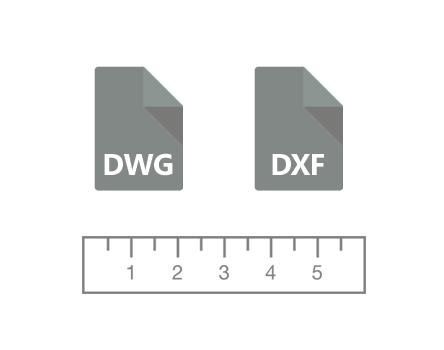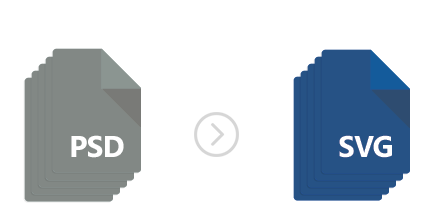Do you have a scanned drawing, a map or some other type of raster image that you would like to turn into a DWG or DXF vector? Supporting most existing raster formats as input files, reaConverter makes this process easier than ever and provides you with a handy scaling tool too.

Vectorization can be done using the two available methods: outlining (creating lines / curves along the borders of linked pixels) or centerlining (generating lines / arcs along the center of linked pixels). And because vector files can contain drawings at any scale set by the designer, when you convert from raster reaConverter allows you to pick the desired scaling unit for the output DXF or DWG image. Available options are: millimeters (set as default), inches and pixels.
reaconverter
How to Convert PDF to PLT (“plotter”)



Printing detailed maps, building projects or various types of full-colored graphics often works better when done via PLT than PDF files. As opposed to other comparable formats, PLT or “plotter” images are specifically designed for being printed with cutting plotters or other similar plotting devices. PLTs employ the HPGL language and can be created with several kinds of CAD software, such as AutoCAD, or through conversion. In case you have a PDF you intend to print with a plotter, reaConverter helps you handle the conversion quickly and effectively.
How to Convert to PDF with CMYK Color Space

Comparing the quality of an image you see on a computer monitor with the one of its printed version might often leave you disappointed, especially if you are using a regular home printing device. Whether it is a PDF, a JPEG or TIFF, the problem persists. The image that looked bright and clear on your backlit screen somehow became faded and darkened once it came out of your printer.
Converting 3D STL Models to DWG
There is a variety of 3D graphics formats available out there and they can be created using quite a few types of specialized programs. From Autodesk software to Blitz3D and QuickDraw to Blender, there is a long list of software using over one hundred types of 3D output formats.
However, not all enjoy a lot of popularity and some provide more advantages than others. For this reason, converting between 3D extensions might be a great way to improve the accessibility of your files while at the same time preserving their quality content intact. And it can be done in no more than a few clicks using reaConverter’s latest edition.



For example, conversion from STL to DWG formats can not only be done fast and easy, but also includes a series of handy customizable features. STL is a computer-aided design (CAD) 3D format used in model prototyping through stereolitography, 3D printing and computer-aided manufacturing. While supported by several software packs, STL enjoys less popularity than DWG, which is probably the most widely used format for CAD modeling. A native format for Autodesk software, DWG is supported by most CAD programs, including AutoCAD, Caddie, IntelliCAD and many others.
How to Convert Multi-Layered PSD Files to Multi-Layered SVGs

PSD is a popular format for storing multi-layered images created or edited using Photoshop software. The main advantage of using the PSD extension is that images remain easily editable, as their layered structure allows users to add or change various elements and features, including image effects, transparencies, color adjustments and many more.
To increase accessibility and ease of transfer, PSD files are usually converted to more widely used raster formats, such as JPEG or PNG. This type of conversion, though, implies flattening the image, which means no major editing is possible afterwards. And this might pose problems at times.
The hassle of realizing you still need to make corrections to a PSD image that has already been flattened can be easily avoided by converting to SVG (Scalable Vector Graphics) in the first place. This extension allows you to preserve the image layers and defines the graphics in XML format. SVG also supports animation and lets you index, search or compress the image.
Converting Multipage PCL Files

PCL (Printer Control Language) is currently considered a standard format for documents that are prepared for printing. Although it was initially designed only for Hewlett-Packard inkjet printers at its release in the 1980s, the PCL format was gradually adopted by other brands as well and nowadays it is compatible with most laser-jet printers.
PCL is a great alternative to PostScript, not only because it is more widely adopted in the industry, but also because it is simpler, faster to operate and cheaper. The PCL format is based on an open language and it is “printer-ready” — it can be operated even from DOS or UNIX. This gives more advantages to PCL than to other similar formats such as PDF or TIFF, making it a reliable and convenient extension for archiving printable documents.
How to Convert Multipage DWG Files to Multipage PDFs

DWG is a proprietary format of AutoCAD — probably the most popular software for drafting 2D and 3D models in the construction industry. Widely used by engineers, architects, designers and other professionals in this branch, the DWG extension is also compatible with several other computer-aided design programs, including IntelliCAD or Caddie.
Most CAD programs offer users 2 types of drafting environments. One is “model space”, where a draft model is initially sketched according to a defined representation scale, and the other is “paper space”, to which users can switch to when preparing a model for printing. The latter allows you to create several layouts, offering different views of the model. Multipage DWG files can contain both “model” pages and “paper” pages.
Converting Documents into TIFF FAX Format

The FAX format is also referred to as CCITT Group 3 or Group 4 compression and many people opt for it either when they plan to prepare an image file for being sent by fax, or when they simply want to save space by converting to a bitonal format. CCITT is an abbreviation coming from the International Telegraph and Telephone Consultive Committee — the organization responsible for establishing several transmission protocols, including Group 3 and Group 4 which apply to black-and-white images. Among the image extensions which support the CCITT Group 3 and Group protocols, TIFF is one of the most popular.
How to Convert DXF or DWG to Grayscale Vectors

DXF and DWG are two popular file formats for professionals in the construction industry. Whether architects, designers or project managers, most of those involved in planning and erecting a building are familiar with these two extensions and with the software that creates them: Autocad — one of the most widely used computer-aided design program for drafting 2D and 3D building models.
How to Convert WMF Files to JPEGs



”Someone recently sent me a WMF file attached to an e-mail. Is it safe to open it on my computer? What kind of file is this and can I use reaConverter to convert it to JPEG?”
A message including this question was recently received by our Technical Support staff and, since other people might experience similar problems, we thought a blog post on this topic would be helpful.
